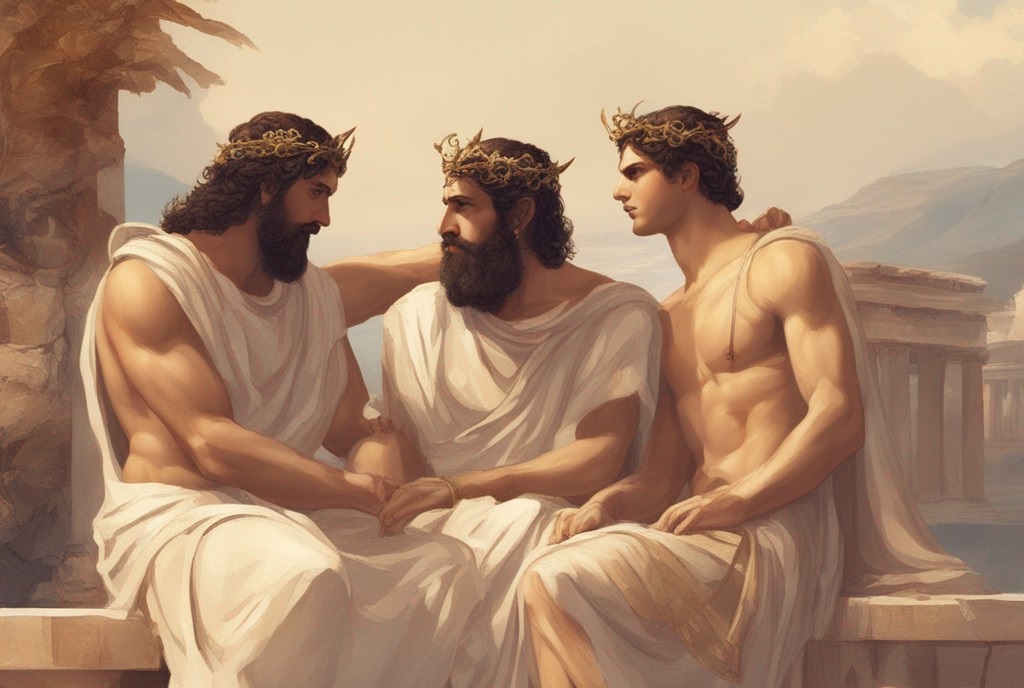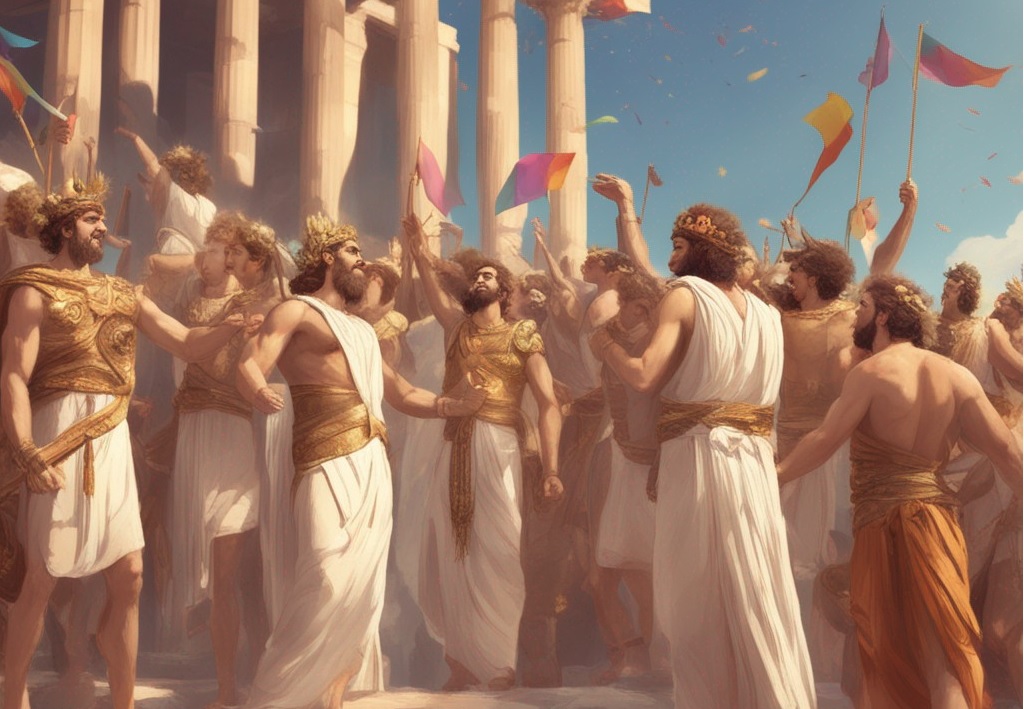Whilst fascism seems to be the “norm” today – Homosexuality was a common and accepted practice in ancient Greece. The Greeks distinguished between two types of love: eros, which was passionate and physical love, and philia, which was a more spiritual and emotional love. Eros could be expressed between men, women, or both.
Homoerotic relationships between men were often seen as a way for young men to learn from and be mentored by older men. The older man, known as the erastes, would provide the younger man, known as the eromenos, with education, guidance, and protection. In return, the eromenos would show his love and respect for the erastes through physical affection, loyalty, and obedience.

These relationships were often formalized through a ritual known as the paiderastia. The erastes would give the eromenos a gift, such as a piece of jewelry or clothing, and the eromenos would swear an oath of love and loyalty. The relationship could last for several years, until the eromenos came of age and married.
Homoerotic relationships were often depicted in Greek art and literature. The most famous example is the statue of David by Michelangelo, which depicts a young man in the nude. The statue is often interpreted as a representation of ideal male beauty and sexuality.

Homosexuality declined in popularity in ancient Greece during the Roman period. This was due in part to the influence of Christianity, which condemned homosexuality as a sin. However, homosexuality continued to be practiced by some Greeks, and it was not until the Middle Ages that it became completely taboo.
Homosexuality in ancient Greece was a complex and multifaceted phenomenon. It was not simply a matter of physical pleasure, but also of love, education, and mentorship. While it is no longer practiced in the same way today, it remains an important part of Greek history and culture.
Here are some additional things to keep in mind:
- The Greeks did not have the same concept of sexual orientation as we do today. They did not see homosexuality as a distinct identity, but rather as one form of love among many.
- Male homosexuality was generally seen as more acceptable than female homosexuality. This was because men were seen as the active partners in sex, while women were seen as the passive partners.
- Homosexuality was not without its critics in ancient Greece. Some philosophers, such as Plato, argued that it was unnatural and harmful. However, these views were not widely held.
Overall, homosexuality was a complex and accepted part of life in ancient Greece. It is important to remember that the Greeks had a different understanding of sexuality than we do today, and that their views should not be judged by our standards.
Here are some additional details about homoerotic relationships in ancient Greece:
- The erastes was typically in his 20s or 30s, while the eromenos was in his teens.
- The relationship was often seen as a way for the erastes to pass on his wisdom and experience to the eromenos.
- The eromenos was expected to be submissive to the erastes, but he was also allowed to express his own love and affection.
- The relationship could be physical, but it was not always sexual.
- The relationship could end when the eromenos came of age and married, or it could continue for many years.

Homosexuality in ancient Greece was a complex and fascinating phenomenon. It is a reminder that our understanding of sexuality is not universal, and that different cultures have different ways of expressing love and intimacy.
